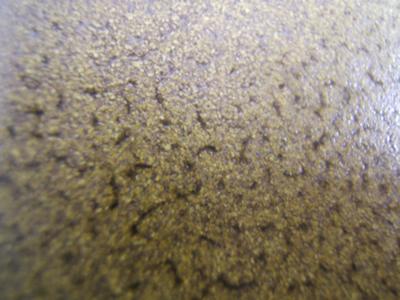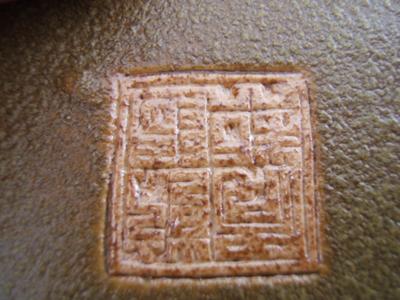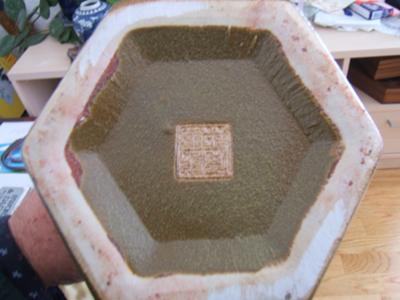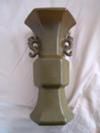Commenting is deactivated.
Please post all new topics and queries to the
Discussion Forum
TEADUST VASE
by Andrew
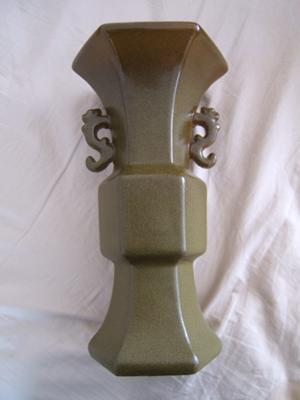
Hi Pete,
I purchased this vase & assume that it is of modern make as it has grind marks underneath to make it stand properly.
Also noticed that there are no signs of crazing to indicate age...do teadust glazed vases display crazing as do the other glassier, smoother Chinese porcelain,that has at least 50 or so years of age?
I was told that it is a tea-dust vase...but there seem to be many colours around that are classed as tea-dust.
This vase has a black base colour with the olive enamel applied over it.Someone told me that black tea glazed ware is rare, another person looked at the vase & said it is modern eel-skin glaze.
What do you think?
I was also wondering do they still use private or state factory hallmarks today in China and if there was any way of determining the identity of the stamp in order to know whether its recent or earlier C20th?, as I am of the opinion if I can acquire better quality, earlier C20th Chinese porcelain, it will become more collectable, as the imperial ware all but disappears in an ever diminishing supply.
all comments welcome.
Comments for TEADUST VASE
|
||
|
||
